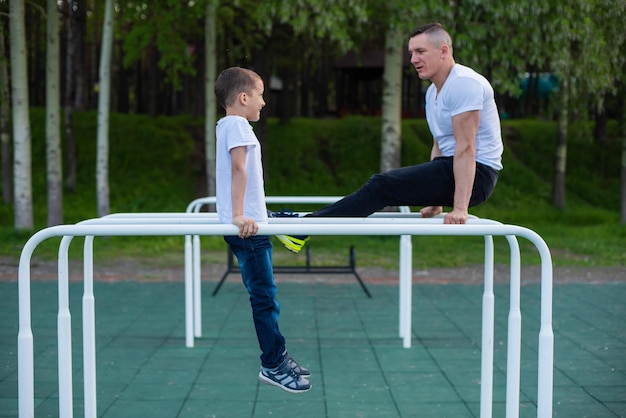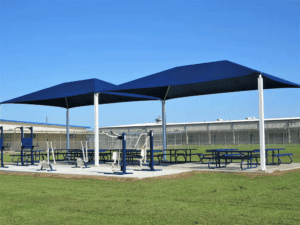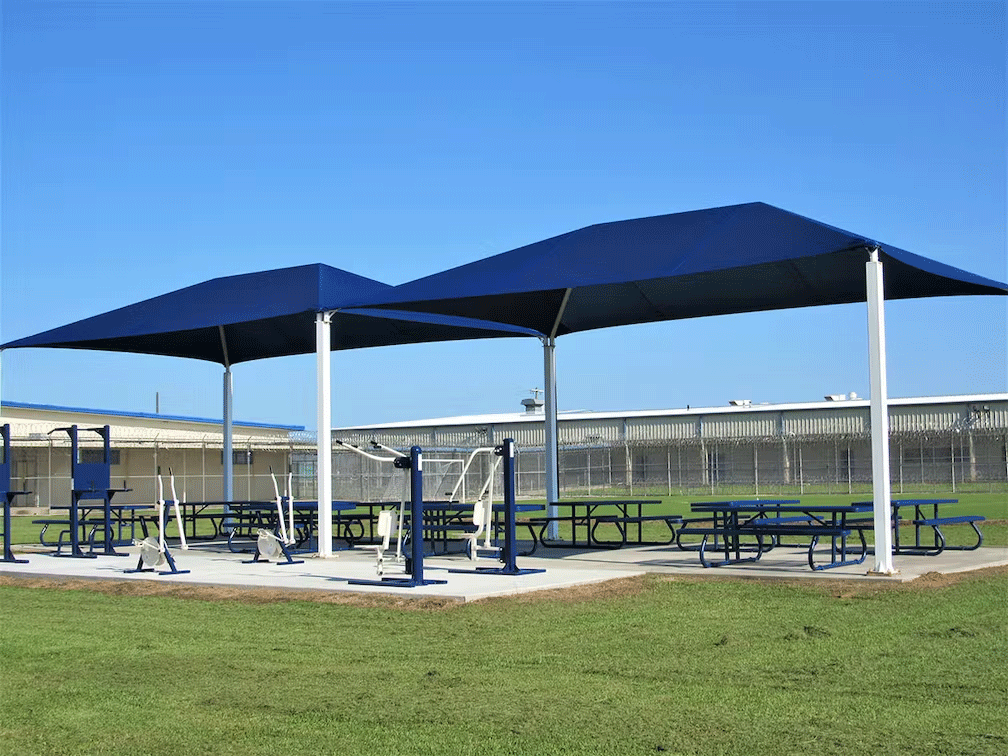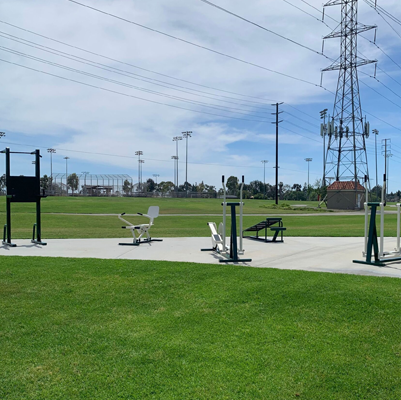Everyone should have access to the equipment they need to stay physically fit, but that can be a challenge. Park exercise areas are one way you can provide community members with exercise equipment without the cost or inconvenience of a gym membership.
Planning and building a park exercise area is pretty straightforward, but there are some important factors to consider and obstacles you might face. Discover how you can plan and build a park exercise area to help your community stay fit with this step-by-step guide.
What Is a Park Exercise Area?
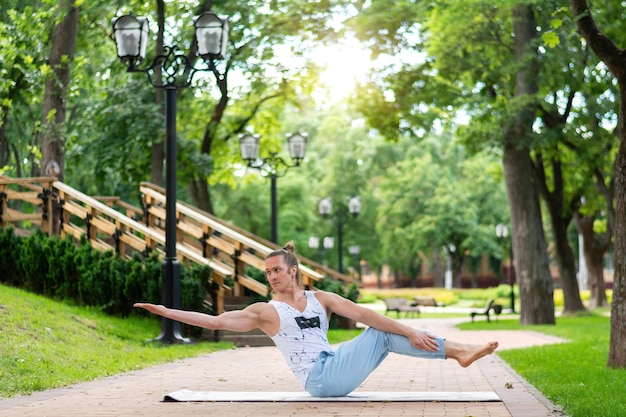
A park exercise area is a section of a public park that’s designated for exercise, with outdoor fitness equipment like horizontal bars, cardio machines, and balance beams. These outdoor fitness spaces are filled with equipment that’s specially designed to withstand harsh elements.
Park exercise areas blend natural scenery with structured workout zones, giving people of all ages a convenient spot to exercise and enjoy fresh air.
Why Park Fitness Zones Matter to Communities
Park fitness areas are free zones where community members can exercise, eliminating obstacles like membership fees. Working out in a shared public area can also help strengthen communities by giving people a chance to socialize with each other.
Communities can enjoy countless benefits from regularly using park fitness areas, including lower rates of obesity, diabetes, and heart disease.
Key Components of a Successful Park Exercise Area
There are several factors to consider when designing a park exercise area, including safety, accessibility, diversity, traffic flow, and landscape integration. Focusing on these components helps you design the best park gym for your community.
Safety & Accessibility Standards for Outdoor Gyms
Equipment should be laid out on impact-attenuating surfaces like rubber mulch, concrete, or synthetic turf that meets ASTM F3101 guidelines. Pathways should be at least 36 inches wide with a slip-resistant coating and no more than a 1:12 slope to meet ADA requirements.
Provide clear sightlines and use lighting and signage to reduce the risk of accidents.
Equipment Variety, Durable Fitness Stations & Age Considerations
Select equipment that allows community members to get a comprehensive workout, including a mix of upper body, lower body, and cardio equipment.
Outdoor fitness equipment should be made of powder-coated steel with UV-stable plastics and marine-grade fasteners to limit corrosion.
Including lower-height bars, adjustable resistance stations, and seated equipment options for seniors can help you make your park gym accessible to users of all ages.
Landscape Planning, ADA Pathways & Environmental Factors
Outdoor exercise equipment needs a solid foundation. Compacted gravel, rubber mulch, or permeable paving creates a solid surface that allows for water runoff, which helps prevent floods and mold growth from excess moisture.
Provide resting areas around your park exercise area, spacing them out no more than 200 feet. Rest areas should include shaded spots, benches, and drinking fountains with ADA-compliant walkways leading to each rest area.
Step 1: Assess Community Fitness Needs
Use data and direct feedback you collect from community members to determine what your park exercise area needs and begin the design process. Consider gaps in park amenities and local fitness options when designing your outdoor fitness space.
Gathering User Surveys & Community Health Data
Use surveys to collect feedback from community members online and at local community centers. Ask questions about preferred workout formats, station locations, and other program ideas.
Review health reports for your community and look at the demographics to get a better idea of who your park gym should cater to.
Partnering with Local Parks & Recreation Departments
Coordinating with park park planners and other park staff to align the park exercise area with the long-term plans of the park. Staff can also help you incorporate seasonal programming and maintenance schedules into the design process, and they can offer advice on permit requirements and volunteer networks.
Step 2: Select the Ideal Site & Layout
The next step is choosing the right site, which typically starts with finding a good area near amenities like walking trails and restrooms.
Evaluating Ground Conditions, Spacing & Calisthenics Areas
Conduct soil compaction tests to make sure the ground can hold the weight of your foundation and equipment. Use a concrete pad for heavy equipment or compacted gravel or mulch for lighter equipment, maintaining at least six feet of clear space around each station.
Ensuring ADA Compliance with Ramps, Paths & Access Points
Design ramps with a maximum grade of 8.3%, landings at the top and bottom, and handrails at any point in the ramp where the slope is more than 5%.
Each station should have a 60-inch turning radius to accommodate wheelchair users. Use curb cuts to connect pathways to parking lots without restricting wheelchair users.
Step 3: Choose Durable, Safe Outdoor Gym Equipment
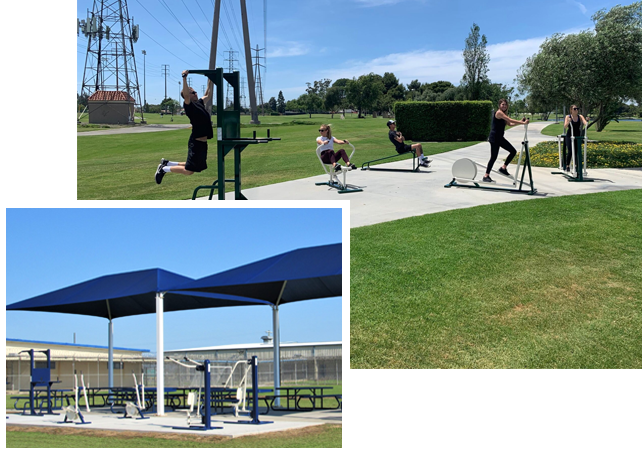
Choosing high-quality equipment helps you create a safe park exercise area and maximize the lifespan of your equipment. It’s also important to consider the installation process and potential for vandalism.
Comparing Leading Manufacturers & Turnkey Installation Costs
Collect detailed notes about freight, site preparation, permit, and equipment fees in separate line items to get a clear understanding of the cost compared to your budget. If you’re not installing the equipment yourself, include the cost of turnkey installation services.
Customizing Stations for All Skill Levels
Choose equipment with adjustable resistance bands, multiple bar heights, step platforms, and seated strength machines to accommodate users of all skill levels and ages. Angled grips, textured handles, and wide platforms also ensure your equipment works for everyone.
Why Partner with Our Park Fitness Solutions
Our park fitness solutions team provides pre-engineered kits that are designed to seamlessly integrate with common site dimensions to reduce costs and minimize delays. Comprehensive maintenance programs and service contracts ensure equipment remains safe, clean, and operational at all times.
Step 4: Plan Budgeting & Funding Sources
Breaking down project costs helps you create a detailed budget when planning a park exercise area. We also recommend including a 10–15% margin for error in case there are shipping delays or other unexpected issues.
Grant Funding Opportunities & Sponsorship Models
Recreation grants, state health department funds, and neighborhood development awards can help fund park exercise areas. You can also fund these spaces with corporate sponsorship packages, allowing local companies to put up branded signs or have naming rights to the exercise area.
Cost Estimates for Installation, Equipment Maintenance Schedule & Upkeep
You can typically expect mid-range equipment packages to cost between $15,000–$50,000, with surfacing costing about $8–$15 per square foot depending on material and annual maintenance costing about 5–10% of the initial equipment cost.
Schedule monthly and quarterly inspections as well as annual audits to make sure equipment is in good condition.
Step 5: Oversee Installation & Staff Training
Create a project plan with milestones for permits, site grading, foundation pours, equipment assembly, and final inspections. Work with vendors, inspectors, and contractors to keep everything in line with safety and quality standards.
Timeline Management, Permits & ASTM Safety Standards
Use a detailed timeline to track permit approvals, utility locates, and environmental clearances to avoid delays. The final sign-off should happen right around the time you’re completing the instructional signage and other finishing touches.
Make sure each station meets ASTM clearances and other safety requirements before opening to the public.
Training Staff on Inspection Procedures & Maintenance
Create a checklist for daily visual inspections, monthly functional tests, and yearly audits. Keep a digital log of inspections or use a binder as an inspection log, and use that log to link specific maintenance tasks to warranty claims and work orders.
Step 6: Promote & Engage the Community
A successful launch event can make your park exercise area an immediate success. This event should be well-publicized, but it’s only the beginning of the steps you can take to encourage community wellness.
Launch Events, Fitness Programs & Local Media Outreach
Hosting a launch event is a great way to make sure everyone in the community knows about the new exercise area. You can advertise this event in the local newspaper, on community social media accounts, and at community centers and other local spots. Launch events are a great opportunity to tell people more about the fitness space and its supporters.
You can also partner with local fitness professionals and programs to have them teach classes at the park, like senior strength clinics or yoga classes.
Leveraging Social Media & Community Health Partnerships
Social media is an excellent way to make sure everyone in your community knows about the exercise area. Take plenty of pictures while you’re developing and planning a park exercise area, then share before-and-after photos when you’re ready to launch. You can also post short instructional videos or videos showcasing various equipment on your social media accounts.
Team up with local hospitals, clinics, and wellness nonprofits to co-host fitness challenges and events that encourage community members to stay active.
Common Pitfalls When Planning Park Exercise Areas
Planning a park exercise area is a lengthy process, so it’s important to make sure you’re not making any common mistakes like ignoring ADA guidelines or overlooking long-term maintenance.
Ignoring Long-Term Maintenance Needs
Maintenance is essential to the longevity of your outdoor exercise equipment. Equipment that’s not properly maintained can be a safety hazard, and maintenance helps reduce long-term equipment costs. You should have a detailed maintenance plan that includes a schedule and checklist for daily, weekly, monthly, quarterly, and annual inspections.
Overlooking Community Input & ADA Guidelines
When planning a park exercise area, ADA guidelines and community input are two of the most important considerations. Following ADA guidelines ensures your park is accessible to every community member. By collecting feedback from your community with surveys, you can make sure people have access to the types of equipment they prefer to use.
Underestimating Safety Inspections & Standards
Equipment and surfaces should meet safety standards such as ASTM, with routine inspections to ensure equipment is safe. If you don’t conduct regular safety inspections, it increases the risk of injury and the resulting liability, both of which can lead to closures.
Frequently Asked Questions
How Much Space Does a Park Exercise Area Require?
When planning a park exercise area, determine the number of stations and size of each station to figure out how much space you need. Each station should have at least six feet of clear space between it and the next station.
What Are the ADA Requirements for Outdoor Gyms?
ADA requirements state that pathways leading to each outdoor fitness station should be at least 36 inches wide, slip-resistant, and graded at a slope of no more than 1:12.
How Often Should Equipment Be Inspected?
Outdoor exercise equipment should be visually inspected daily and weekly to check for obvious signs of damage. Monthly and quarterly functional inspections should be conducted to make sure equipment is working properly, with yearly audits to verify equipment safety.
Can Schools or the NRPA Partner on Public Fitness Zones?
Yes, schools and the National Recreation and Park Association (NRPA) can and do partner with local communities to develop public fitness zones to make exercise more accessible to the community.
Which Funding Models Are Most Common for Parks?
Parks and outdoor fitness spaces are commonly funded by federal recreation grants, state health department funds, or cultural and neighborhood awards. Parks can also be funded through corporate sponsorships, allowing companies to post branded signage or name the park after the company in exchange for funding.
Conclusion: Planning Your Ideal Park Exercise Area
Planning a park exercise area is a lot of work, but making exercise more accessible can benefit your community in so many ways. Designing an outdoor fitness space specifically for your community gives everyone access to fitness regardless of their age, skill level, or finances.
At TriActive USA, we have a collection of outdoor fitness equipment that makes planning a park exercise area simple. All our equipment is made from durable steel and powder coated to withstand harsh weather, and every station comes with a warranty. Check out our catalog or contact us to start planning your ideal park exercise area.

